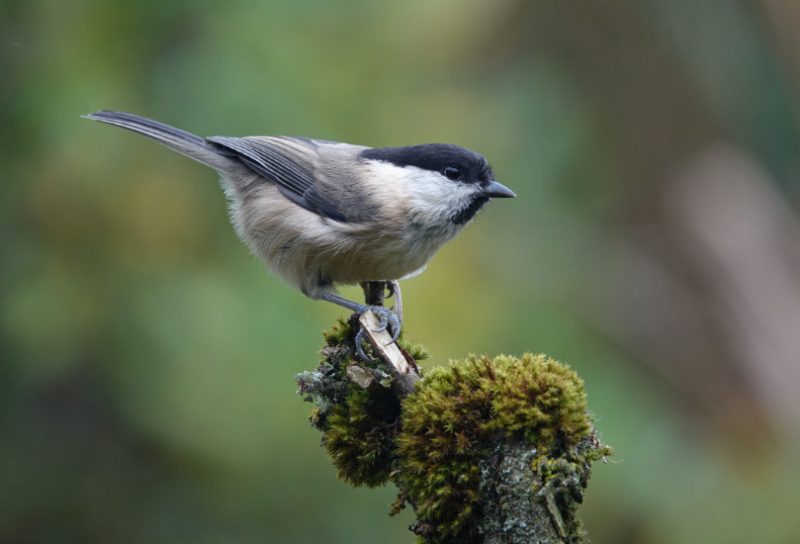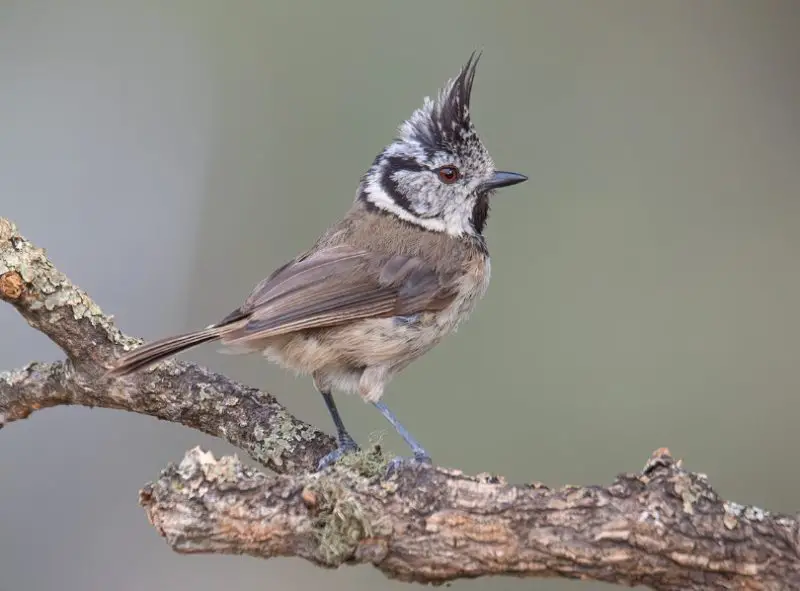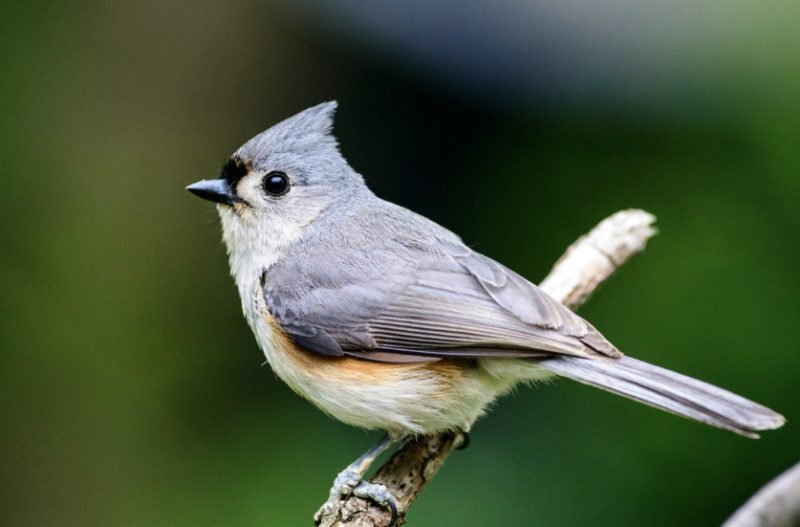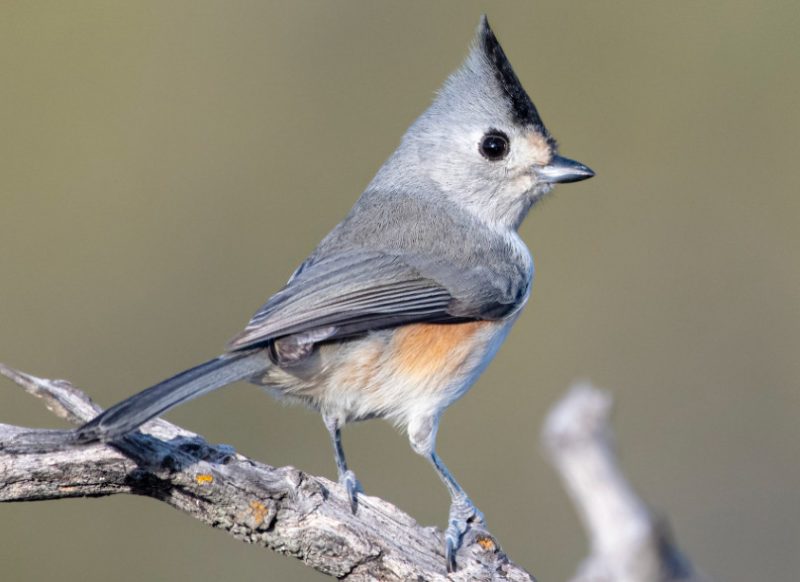Types of tit birds encompass a diverse array of species within the Paridae family, each distinguished by unique characteristics and habitats. From the familiar great tit to the lesser-known azure tit, these avian wonders grace ecosystems worldwide.
With their distinctive plumage, behaviors, and ecological roles, tit birds captivate birdwatchers and researchers alike. Whether it’s the agile acrobatics of the Eurasian blue tit or the secretive habits of the ground tit, each species adds richness to our understanding of avian biodiversity.
Different Types of Tit Birds
Willow Tit

Belonging to the passerine bird family Paridae, the willow tit (Poecile montanus) is prevalent across the Palearctic, inhabiting temperate and subarctic Europe. Distinguished by its black head and bib, its plumage is predominantly grey-brown and off-white.
Unlike its closely related counterpart, the marsh tit, the willow tit specializes in coniferous habitats, enabling it to breed farther north. Typically non-migratory, it remains a resident species throughout its range.
This adaptability to coniferous environments sets it apart from other tit birds. With its distinct appearance and habitat preference, the willow tit is easily recognizable within its breeding territories across Europe and the Palearctic.
Crested Tit

The crested tit (Lophophanes cristatus), also known as the European crested tit, is a member of the tit family Paridae. It breeds regularly in deciduous forests across France and the Iberian Peninsula, as well as in coniferous forests in central and northern Europe.
Its preferred habitat is the ancient pine forests of Inverness and Strathspey in Scotland, making it a resident population. While it rarely ventures outside its habitat, there have been occasional reports of stray crested tit in England.
Recognizable by its distinctive crest and plumage, the crested tit remains a fixture in its preferred woodland environments.
Tufted Titmouse

The tufted titmouse (Baeolophus bicolor), a native North American songbird belonging to the tit and chickadee family (Paridae), is one of the smallest members.
Distinguished by its white underbelly, grey upper body, and rusty orange border between them, it boasts a tufted grey crest and black forehead, which are distinctive features.
While the black forehead is less prominent in juveniles, making them resemble oak titmice, their ranges do not overlap. Males typically outweigh females. With its unique appearance and small size, the tufted titmouse stands out as a remarkable member among tit birds.
Black-Capped Chickadee

Throughout North America, deciduous and mixed woodlands are home to the little, non-migratory black-capped chickadee (Poecile atricapillus), popularly known as the chickadee. It is the official state bird of Maine and Massachusetts in the United States and the official provincial bird of New Brunswick province in Canada. It is a member of the tit family (Paridae).
Known for its capacity to withstand cold winter nights by lowering its body temperature and for its exceptional sense of spatial orientation, which it uses to locate food that has been stored away, the black-capped chickadee is also distinguished for its fearlessness in human company and tendency to eat off hands.
Carolina Chickadee

Poecile carolinensis, sometimes known as the Carolina chickadee, is a small passerine bird that belongs to the Paridae family. Its length is between 11.5 and 13 centimeters (4.5 to 5.1 inches), and its weight is between 9 and 12 grams (0.3 and 0.42 ounces). Its face is marked by a black bib and hat with white sides.
It has a reddish brown color on the sides and back, with a white underside. The Carolina chickadee resembles the black-capped chickadee with its small wings, short black beak, and slightly longer tail; however, it can be distinguished from the latter by having a shorter, squarer tail and brownish wings with less noticeable white fringe.
Sultan Tit

Melanochlora sultanea, the sultan tit, is a forest bird found in Asia. Its bill is black and its head crest is bright yellow. Its feathers, both upper and lower, are strikingly patterned in black and yellow.
Interestingly, people regard both sexes equally. Juveniles lack the bright colors and lengthy crest of adults, while females have a greenish-black upper body and a yellow throat.
The sultan tit, which is closest to the Parus titmouse, has distinctive characteristics, such as the male’s vivid yellow plumage on the forehead, crown, breast, throat, and head.
It lifts its crest and stands on its hind legs, indicating attention or alarm. The diversity of tit species is increased by this unique bird.
Oak Titmouse

Among tit birds, the oak titmouse (Baeolophus inornatus) is a common species. In 1996, the American Ornithologists’ Union recognized it as a different species from the plain titmouse due to its unique songs, preferred habitat, and genetic composition.
This little gray bird with a brownish tinge has brighter gray undersides and a modest crest on its head. There is either little or no sexual dimorphism.
It favors wide woodlands with oak and oak-pine trees, and it can be found in the northern San Joaquin Valley and the Pacific slope extending from southern Oregon to Baja California. It is seen in woods as well as low- to medium-elevation areas, where it is most prevalent.
Yellow-Browed Tit

The yellow-browed tit, Sylviparus modestus, belongs to the Paridae family, being the sole member of its genus, Sylviparus. It inhabits regions including the southern Himalayas, northeastern Indian and Chinese plains, and southern China, with sporadic sightings in Southeast Asia.
Preferring moist lowland forests and montane forests, it thrives in subtropical and tropical climates. Recognizable by its yellow brow, this tit species adds to the diversity of its family.
The Black-Crested Titmouse

The black-crested titmouse, a member of the Paridae family, is also known as the Mexico titmouse. Elevated to species status in 2002 from once being considered a subspecies of the tufted titmouse, it inhabits southern Texas, eastern Oklahoma, and central Mexico, with sightings as far as St. Louis, Missouri.
Recognizable by its rusty-colored flanks, gray upper parts, and light belly, it measures 14-15 centimeters in length. Distinctive features include the male’s long, jet-black crest and the female’s shorter, paler one.
Feeding mainly on spiders, insects, berries, and nuts, it nests in various structures like tree cavities, fence posts, and man-made bird homes, laying four to seven white eggs marked with reddish brown in March or April.
Ground Tit

The ground tit, or Pseudopodoces humilis, inhabits the Tibetan plateau, north of the Himalayas, also known as the Tibetan ground tit or Hume’s ground tit. Initially mistaken for a crow or jay due to its unusual appearance, DNA analysis revealed its membership in the tit family (Paridae), making it the sole member of the genus Pseudopodoces.
Found across the Tibetan Plateau, spanning China, Nepal, India, and Bhutan, its distinctive characteristics and habitat make it a notable addition to the avian diversity of the region.
Juniper Titmouse

Among passerine birds, the juniper titmouse (Baeolophus ridgwayi) is unique. It was identified as a distinct subspecies of the plain titmouse in 1996 and is distinguished by its distinct genetic makeup, ecological preferences, and songs.
This little gray bird has a delicate crest and little sexual dimorphism. Its range includes middle Colorado, west Texas, northern Mexico, southeastern Oregon, and the Great Basin.
It usually roosts in foliage, hiding itself with twigs or dead pine needles. It prefers to nest in tree holes, dense vegetation, or artificial bird boxes. It is usually observed in pairs or small groups, however after mating season it sometimes joins mixed-species foraging flocks.
Azure Tit

A member of the Paridae family, the azure tit (Cyanistes cyanus) is found in Pakistan, northwest China, Russia, and Central Asia. Its unique characteristics make it stand out at a length of 12–13 centimeters.
Its blue upper body is highlighted by a dark eye line, and it is distinguished by a white head, tail, wing bars, and underside.
It is a year-round dweller of scrublands, wetlands, and deciduous or mixed woods in temperate and subarctic regions. It usually lays ten eggs in its tree-cave nests and, when startled, will bite or hiss in a defensive manner. Its main sources of food include insects, seeds, tiny invertebrates, insect larvae, and egg yolks.
Great Tit

Great Tit (Parus major), members of the tit family Paridae, are passerine birds recognizable by their distinctive black heads, white cheeks, olive upper parts, and yellow underparts.
Common in wooded areas across Europe, the Middle East, and parts of Asia and Africa, they adapt well to varied ecosystems. Once considered a single species, genetic variations led to the classification of the southern Asian Cinereous Tit and the East Asian Japanese Tit as separate species.
Great Tit are insectivores in warmer months but diversify their diet in colder seasons. They nest in tree cavities, with females incubating about 12 eggs. Despite threats from predators like sparrowhawks and nest robbers such as woodpeckers, squirrels, and weasels, Great Tit thrive in urban environments.
Eurasian Blue Tit

The Eurasian blue tit (Cyanistes caeruleus), is a small passerine bird native to Eurasia. Its striking blue and yellow plumage makes it easily identifiable.
Common in deciduous or mixed forests across temperate and subarctic Europe and the western Palearctic, they favor areas with oak trees and nest primarily in tree holes, though they adapt to nest boxes when necessary.
Competing with the larger great tit for nesting sites and foraging areas, Eurasian blue tit primarily feed on insects and spiders during breeding season, transitioning to seeds and other plant matter afterwards.
Known for their acrobatic skills, they adeptly perch upside down on tree branches and bushes while foraging.
Coal Tit

The coal tit (Periparus ater) is a small passerine bird belonging to the tit family, Paridae. Found throughout the Palearctic, from subtropical to temperate zones, including North Africa, it is recognized by its black-crested appearance. Breeding widely across its range, its distinctive black cap and white nape distinguish it from similar species.
Adaptable to various habitats, from woodlands to gardens, coal tit primarily feed on insects, seeds, and nuts, navigating through foliage and branches with ease. Despite their small size, they play a significant role in ecosystems as seed dispersers and insect controllers.
Marsh Tit

The willow tit is similar to the marsh tit (Poecile palustris), a passerine bird belonging to the tit family Paridae and genus Poecile. It weighs about 0.42 ounces and is only 4.7 inches long. There are eight to eleven known subspecies of this bird, which has a brown back, white cheeks, a black head and neck, and grey-brown wings and tail.
They were initially confused for the willow tit, but in 1897 they were properly identified. Despite its name, the marsh tit is a native of temperate Europe and northern Asia, where it can be found in a variety of environments, including dry woods.
It builds nests in tree hollows, frequently enlarging pre-existing cavities rather than excavating new ones, and feeds on a varied diet that includes everything from seeds to spiders.






